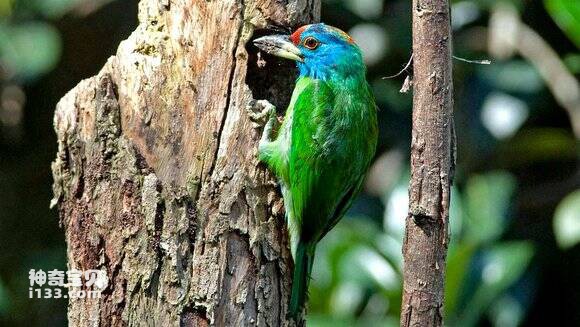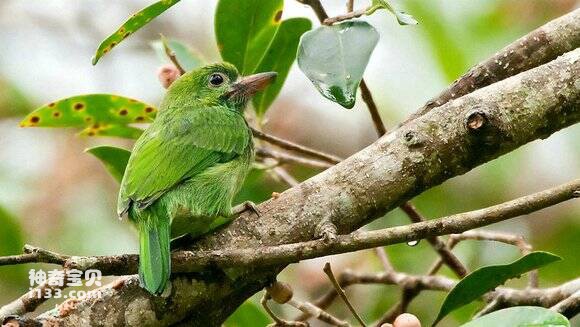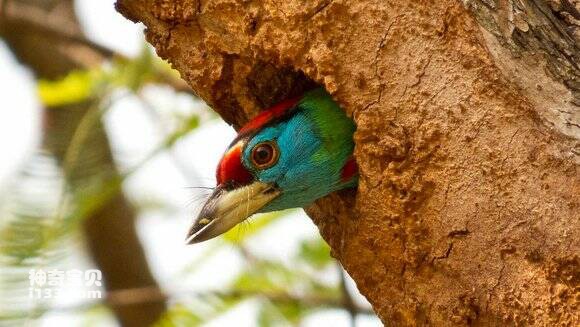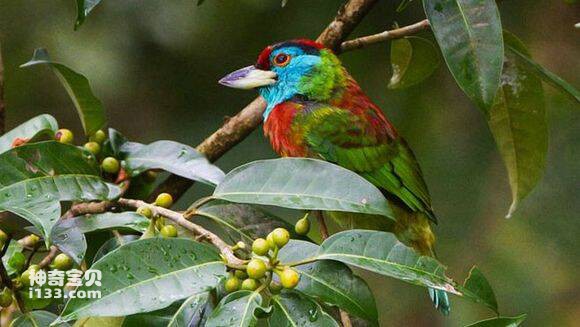Psilopogon asiaticus
IUCN
LCBasic Information
Scientific classification
- name:Psilopogon asiaticus
- Scientific Name:Psilopogon asiaticus,Megalaima asiatica,Blue-throated Barbet
- Outline:Climbing birds
- Family:
Vital signs
- length:19-23cm
- Weight:70-90g
- lifetime:No textual research information is available
Feature
The forehead to the top of the head is bright red, and there is a broad black horizontal band on it, which divides the red into two pieces before and after
Distribution and Habitat
Worldwide distribution: It is found in China, India, Myanmar, Thailand, Laos, Vietnam and Indonesia.
Distribution in China: It is distributed in western, central, southern and southeastern Yunnan, as well as Guizhou and Guangxi.
Blue-throated Woodpecker mainly inhabits the evergreen broad-leaved forest in the middle and low mountains, hills, gullies and plains at the foot of mountains below 2000 meters above sea level, and also appears in the forest margin and village edge trees.
Appearance
The forehead is vermilion red, followed by golden yellow, with a blue or black transverse band on the head; The pillow is vermilion, the front of the head and the base of the lower mouth are also vermilion; There is also a vermilion spot on both sides of the lower throat. There is also a black stripe on each side of the red head; Brow lines, side of head, chin and throat bright copper blue. The upper body is green, the back neck is bright; The back and shoulders are olive yellow, and the wings are dark brown, but the surface of the wings is also grass green, and darker than the back. The outer covering feathers are blue, the primary flight feathers are black, except for the first to the second primary flight feathers, the rest of the primary flight feathers are blue-green, and the end is light yellow; Deep grass green tail feathers, chest, abdomen and other lower body light yellow green, slightly decorated copper blue.
Iris brown or reddish-brown, exposed skin around eyes orange, co
Details
The species is known as Psilopogon asiaticus, Megalaima asiatica and Blue-throated Barbet, and has three subspecies (1. Named subspecies: Psilopogon asiaticus asiatica. 2. Yunnan subspecies: Psilopogon asiaticus davisoni. 3. Thai subspecies: Psilopogon asiaticus chersonesus.) .

Blue-throated woodpeckers often live alone or in pairs, but occasionally feed together in small groups, especially where food is more abundant. After eating more hidden in the tree canopy branches and leaves, and constantly issued "Kodolo, Kodolo, Kodolo" crisp and loud cry. It mainly feeds on plant foods such as fruits, seeds and flowers of banyan trees and other trees, but also eats a small amount of insects and other animal foods。

The breeding period of the blue-throated Woodpecker is from April to June. Usually nests in dense forest trees, sometimes in sparse trees and trees on the edge of the forest and farmland, nest for the hole nest, by the parent bird to dig holes for the nest, usually choose dead trees or decaying trees to dig holes. The hole is 3-15 meters above the ground. Each clutch lays 3-4 eggs, sometimes as many as 5. Oval white in size 27-30 mm x 19-22 mm. The male and female incubate the eggs in turn, and the chicks become late sex.

The distribution area of the blue-throated Woodpecker in China is small, and the population is not common。

It was included in the List of Beneficial Terrestrial Wildlife under State Protection or of Important economic and scientific research Value issued by the State Forestry Administration of China on August 1, 2000.
Listed on the IUCN Red List of Threatened Species (IUCN 2016 ver 3.1) - Not Threatened (LC).
Protect wild animals and eliminate wild meat.
It is everyone's responsibility to maintain ecological balance
!








